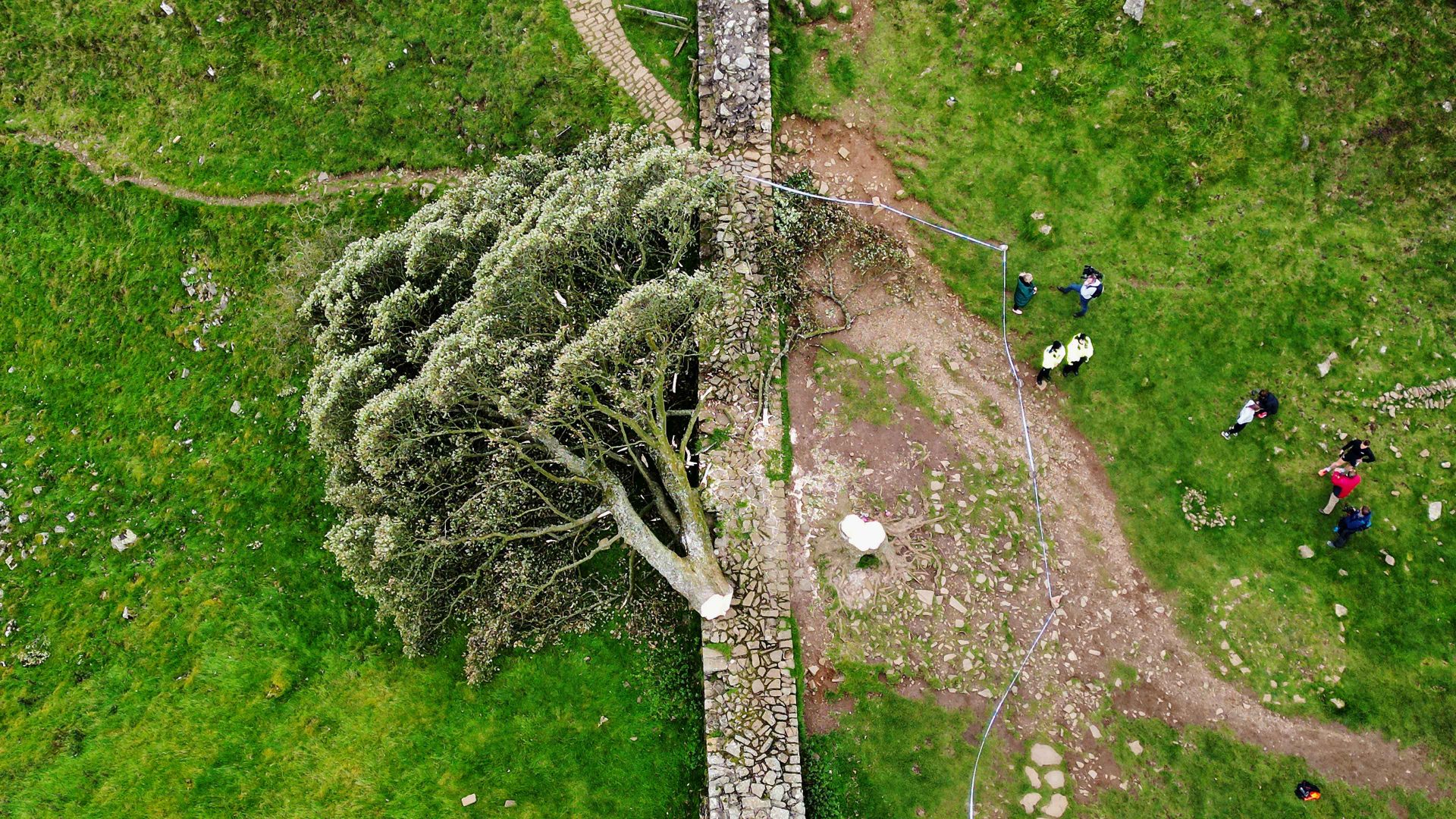If its value was that it was greatly appreciated by so many people, do the individual trees being felled largely unseen in Brazilian rainforests count for less?
The Irish philosopher George Berkeley (1685-1753) argued that physical objects exist only so long as they are perceived. They aren’t mind-independent.
Samuel Johnson famously ridiculed this by kicking a stone and declaring “I refute it thus,” though the fact that Johnson felt the hardness of the stone on his stubbed toe would for Berkeley have been no surprise – that was just another way of experiencing the stone. There would be no way for Johnson to check the continued existence of the stone without some sensory experience of it, but of course, while experiencing it, the stone exists.
If a tree falls in a forest and no one sees or hears it, and if no one feels the thud of the trunk hitting the ground, then does that tree exist? On Berkeley’s view, you’d think not, but in fact in his system there is a God who can perceive things when we’re not around, and so guarantee its existence.
The 150-year-old Sycamore Gap tree was certainly perceived by many people, and perhaps by God too. Winner of the 2016 England Tree of the Year award, and with a bit part in the movie Robin Hood: Prince of Thieves, it was the most appreciated sycamore tree in the world before its demise at the hands of two thrill-seeking vandals in September 2023.
It was a beautiful tree, a local celebrity, a much-loved landmark. Daniel Graham and Adam Carruthers, the tree’s assailants, were sentenced to four years and three months’ imprisonment last week.
There are some interesting philosophical questions suggested by this case. First, did the vandals really destroy the tree? It might seem obvious that they did: they felled it with a chainsaw. That individual plant was irreplaceable, just as a friend who dies would be.
It was a unique tree with a particular history and there is no way to bring that back. Some people might be happy if it were somehow possible to put a similar large sycamore in its place, but most would still feel a sense that something important was lost.
But perhaps it’s still there in a sense. The stump is sprouting. It could take 150 years to regrow, but the tree is still alive. From a biological point of view, though damaged, it’s the same tree: it has continuity as an organism.
Perhaps that should make the vandals’ crime one of attempted, but not actual, “tree murder.” Graham and Carruthers intended to kill it, but only maimed it. If they’d succeeded in their intentions, though, would they have deserved a harsher punishment still? Perhaps. Unlike Immanuel Kant, we do tend to judge people partly by the actual consequences of their actions, and not just by their intentions.
Another philosophical question that springs to mind is this. Did the value of the tree lie in the fact that it happened to be greatly appreciated by so many people? Do the individual trees being felled each day largely unseen in Brazilian rainforests then count for less?
Deep ecologists, inspired by the Norwegian environmental philosopher Arne Naess, argue that we have focused too much on what our natural environment means to us as human beings, and that we need a radical shift away from this anthropocentric stance. We need to protect nature for its own sake, not just for ours.
A tree growing unseen in a forest has intrinsic value: value in itself, and value as part of an ecosystem, and it would continue to have this value even in a world without human beings. Naess argued for a spiritual attitude towards the Earth that stops putting homo sapiens at the centre of everything.
Yet an attitude of deep ecological reverence towards the natural world for its own sake, not ours, will take us only so far. It’s never going to be widespread enough to change policy. We need greater awareness of the far-reaching consequences of damage to individual plants and animals and to whole ecosystems for human beings as well as for the ecosystems themselves.
The loss of an individual tree is a tragedy, but for many people, the rapid loss of global biodiversity remains a statistic, and a rather meaningless one at that, not something that they see as affecting them.
By all means, let’s mourn the individual sycamore (for its own sake and for ours), but not at the expense of the larger ecological issues.
We don’t want to miss seeing the ecological woods because we’ve channelled all our attention on to a single tree.
